Tritium Plasma Experiment (TPE)
The Tritium Plasma Experiment (TPE) is a linear plasma device to accelerate deuterium and tritium plasma ions into metal target samples. The main focus of study at present is tungsten samples since tungsten high heat material is the most promising material for use in fusion divertors.
TPE test samples are first irradiated at the High Flux Isotope Reactor at ORNL to simulate fusion neutron damage. Then the samples are exposed to fusionrelevant plasma in TPE. The samples are examined using Nuclear Reaction Analysis (at the University of Wisconsin- Madison) to understand density profiles of deuterium and tritium inside the sample. Thermal Desorption Spectroscopy and Positron Annihilation Spectroscopy are also used to understand the retention of deuterium and tritium in the sample material. This information is used to understand the safety and operation of fusion reactors.
TPE can generate a maximum ion flux of 4x1022 ions/m2-s with ion temperatures between 50 and 200 eV. The safety limit for handling radioactive samples in the STAR facility is a dose rate of less than 10 μSv/hour. TPE can accept beryllium samples as well as other fusion metals such as steel or tungsten.
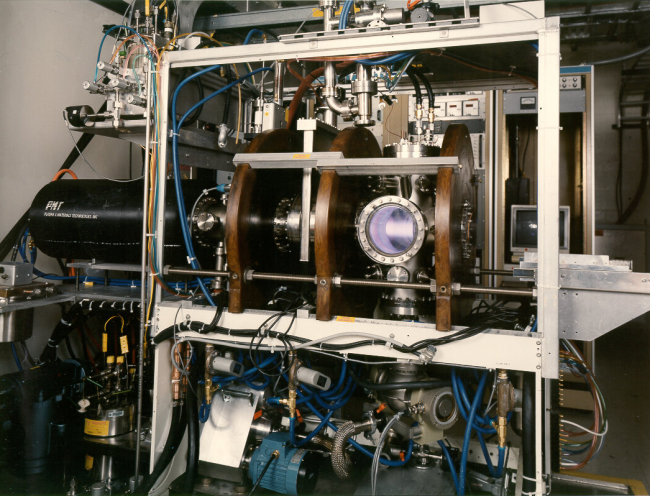
The Tritium Plasma Experiment.

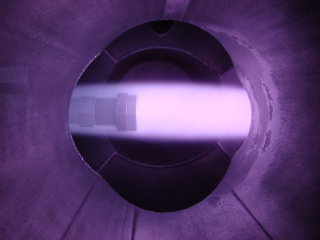
TPE Sample Holder, supplied by SNL-CA, holds 25-mm diameter tungsten samples |
TPE deuterium-tritium plasma at the sample holder |
Contact: Masashi Shimada | (208) 533-4472 | Email Contact
Tritium Gas Absorption Permeation (TGAP) Experiment
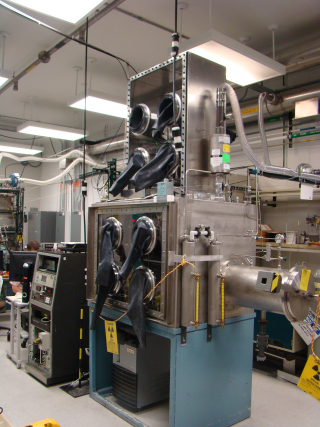
The TGAP experiment studies the solubility and permeation of tritium in molten lead-lithium. This liquid metal material is of interest since it can serve as both coolant and tritium breeding material in a fusion reactor. Understanding how the tritium (that would be bred in this coolant) interacts with the parent coolant is necessary to know that tritium fuel can be safely handled in a fusion reactor. TGAP injects a measured small quantity of tritium gas (e.g., 0.1 milligram) into a sample of liquid metal and measures the tritium that leaves the sample.
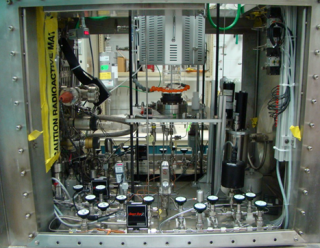
Tritium in lead-lithium experiment apparatus |
The TGAP experiment enclosure |
Contact: Masashi Shimada | (208) 533-4472 | Email Contact
Neutron Irradiated Material Ion Implantation Experiment (NIMIIX)
The NIMIIX is an ion source and accelerator that is used to implant ions into solid metal samples; it is a smaller, non-tritium version of TPE. Like TPE, NIMIIX can accept neutron-irradiated samples from the High Flux Isotope Reactor at ORNL, or other irradiated samples, and expose these metal samples to a deuterium ion beam that implants deuterium ions into the target metal matrix. NIMIIX can generate 1x1018 to 1x1020 ions/m2-s of ~5 keV ions to the target. NIMIIX samples are treated using Thermal Desorption Spectroscopy and Positron Annihilation Spectroscopy to understand the retention of deuterium in the target material.
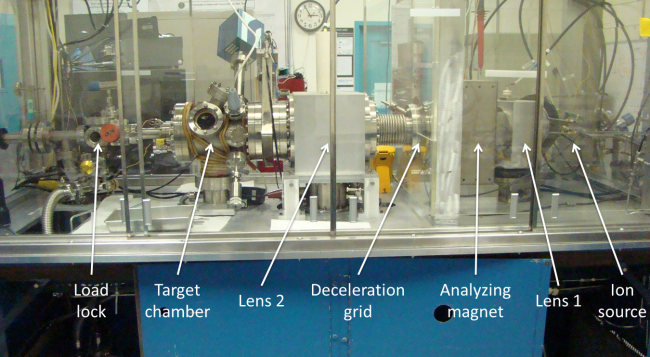
NIMIIX Experiment
Contact: Chase Taylor | (208) 533-4068 | Email Contact


